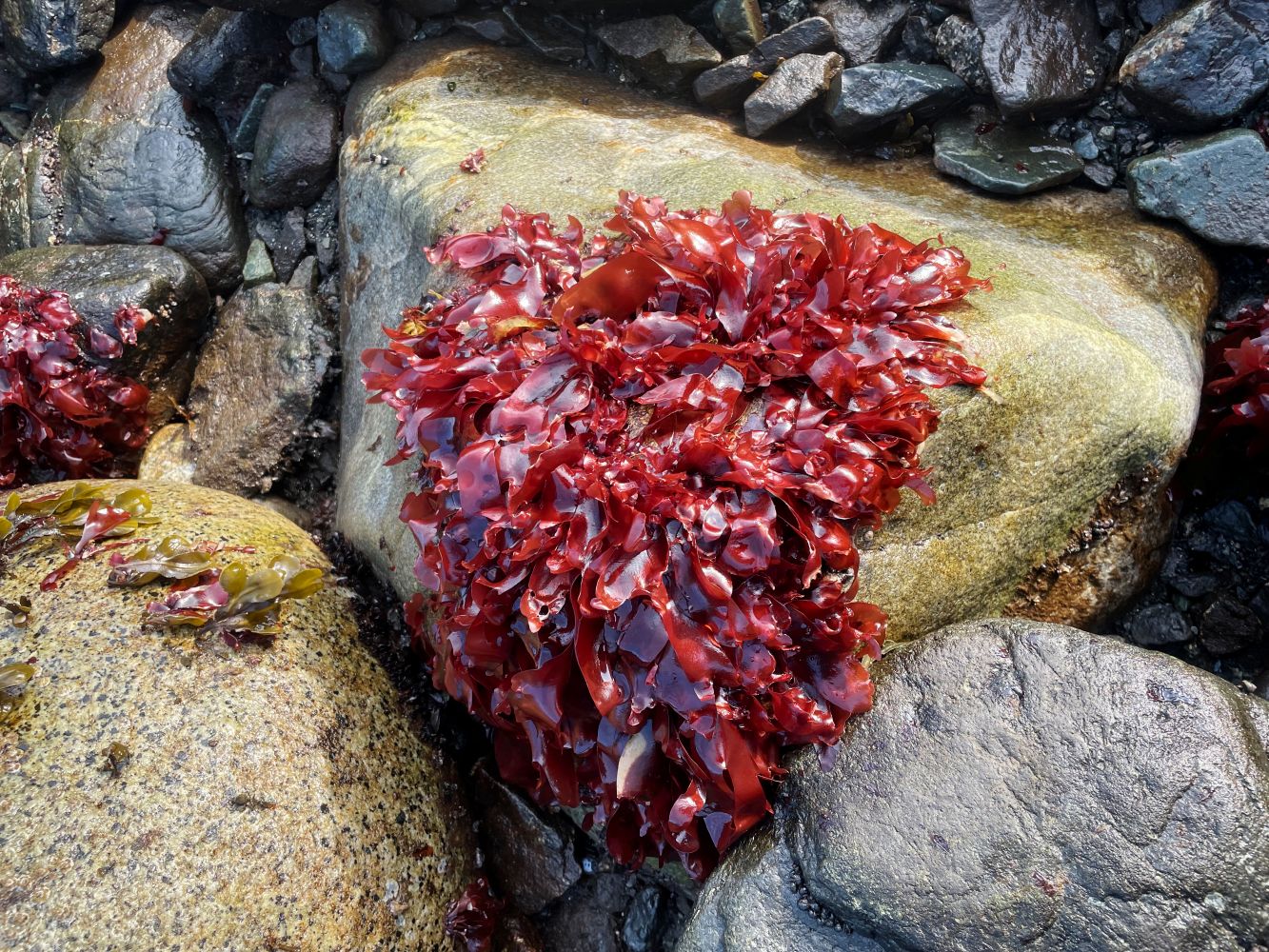Climate Impacts on Red Seaweed Harvests

Climate Impacts on Red Seaweed Harvests
ACRC scientists are collaborating with University of Alaska partners, the Chilkoot Indian Association, and the Chilkat Indian Village, to explore how changes in freshwater discharge affect red seaweed harvests in Southeast Alaska.
Increased storm frequency and glacial retreat are altering freshwater, sediment, and nutrient delivery to coastal environments. These shifts may impact the distribution, biomass, and nutritional quality of ecologically and culturally important red seaweeds, including Devaleraea mollis and Palmaria hecatensis.
Through field sampling at intertidal harvesting sites, researchers are measuring water temperature, salinity, turbidity, and nutrient concentrations. Red seaweed samples are being analyzed using metabolomics — the study of how cells produce, break down, and use materials — to assess changes in chemical composition related to environmental conditions. In parallel, stable isotope analysis of nitrogenous compounds in water and seaweed tissue is being used to trace nitrogen sources supporting seaweed growth.
By linking watershed dynamics with seaweed metabolic responses, the group aims to better understand how shifts in land-ocean connectivity affect seaweed populations. Findings will inform adaptive management strategies for traditional harvesters facing rapidly changing coastal ecosystems.
Contact
- Lindsay Meyer, UAF (lmeyer12@alaska.edu)
Collaborators
- Schery Umanzor, UAF (sumanzor@alaska.edu)
- Meredith Pochardt, Chilkoot Indian Association (mpochardt@chilkoot-nsn.gov)
- Liam Cassidy, Chilkoot Indian Association (lcassidy@chilkoot-nsn.gov)
- Jason Fellman, ACRC (jbfellman@alaska.edu)
- Emily Whitney, ACRC (ejwhitney@alaska.edu)
- Patrick Tomco, UAA (pltomco@alaska.edu)



